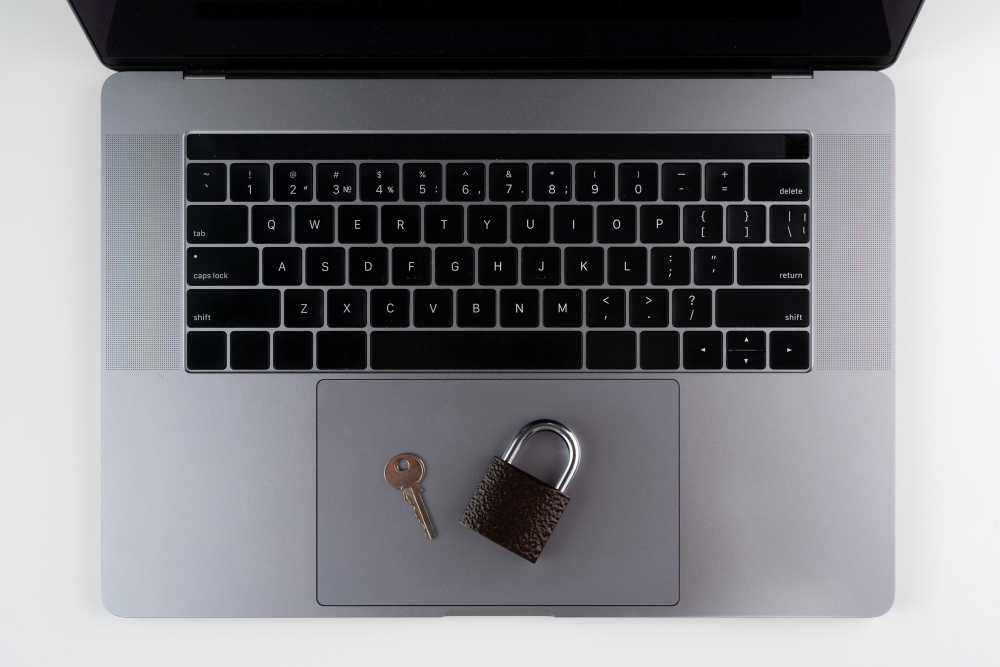Using Wi-Fi to access the internet is necessary in this digital era to carry out many activities such as accessing information, communicating, doing work and utilising the internet properly. However, being unable to monitor and have a sound security system could pose a significant risk to your Wi-Fi. In this case, a network security key or Wi-Fi password is the solution.
A password is a secret code that functions as a network protector so that unauthorised access cannot easily break through the network system and secure access to a wireless network. The network security key is a password for your Wi-Fi.
What is a network security key?

The network security key is one of the codes contained in Wi-Fi used by authorised access to maintain the Wi-Fi network from various risks such as data breaches, data theft, or even malicious attacks. Using the internet to dig up and store information will undoubtedly be crucial for a user. Therefore, having a network security key as a protection layer between a network and connected devices is necessary to maintain a secure internet connection. Generally, it consists of biometric data or a digital signature with 8-12 characters.
Types of network security keys

WEP (Wired Equivalent Privacy)
WEP is one of the three network security protocols that protect wireless networks. Its main job is to stop people from connecting without permission. WEP works by using a code called a key to keep network traffic hidden from outsiders.
However, WEP is outdated and easy for cybercriminals to break, making it an unreliable security protocol. Even though it was a good start in the early days of Wi-Fi, it’s no longer safe today. Most modern routers and devices don’t even offer WEP anymore. If your network still uses WEP, it’s time to upgrade to a better and safer option.
WPA (Wi-Fi Protected Access)
WPA was introduced as a stronger replacement for WEP, improving the security protocol significantly. It enhances security by using better encryption methods, making it harder for attackers to break in. One of its features is TKIP (Temporal Key Integrity Protocol), which regularly changes the encryption key to enhance wireless security.
This makes it safer than WEP. However, WPA still has some security flaws and is now considered outdated for most home and business networks. While it was a step in the right direction, experts today recommend switching to WPA2 or newer systems to protect your data and devices adequately from cyber threats.
WPA2 (Wi-Fi Protected Access 2)
WPA2 is one of the most trusted security standards in wireless networks today. It uses stronger encryption, called AES (Advanced Encryption Standard), which offers much better protection than WEP or WPA. WPA2 keeps your network safer by ensuring that only people with the correct password can access it.
It’s commonly used in homes, businesses, and public Wi-Fi spots. Some newer devices now support WPA3, which is even better, but WPA2 is still secure for most users when connecting to the Wi-Fi network. Always ensure your network uses WPA2 or higher, and avoid using older methods like WEP or WPA.
How to find a network security key

Finding a network security key on a router
Finding the network security key on the router is relatively easy because it is often printed directly on the back or bottom of your router. However, using a web browser, you can also log in to your router’s settings. Type your router’s IP address into the address bar. Enter your admin username and password (check your router label or manual for details). Once logged in, navigate to Wireless Settings or Wi-Fi Settings to view or update your network key.
Finding a network security key on a Windows device
The steps to find the network security key on your Windows device are not too difficult. Click on the Start Menu and open Settings. Go to Network & Internet, select Status, and click Network and Sharing Center. Find the name of your Wi-Fi network and click on it to establish a secure internet connection. After that, you will find a new window, and you can select Wireless Properties, click the Security tab, and see a field called Network Security Key.
Finding a network security key on a Mac
Mac users can also easily check the network security key if connected to Wi-Fi. First, you can open Keychain Access from the Utilities folder in Applications to find your network security key. In the search bar, type the name of your Wi-Fi network. Double-click on the result that appears to connect to the Wi-Fi network seamlessly.
A new window will open, and then you can tick the box that says Show password. You’ll be asked to enter your Mac’s admin username and password to reveal the network security key. Once verified, you’ll see the Wi-Fi password displayed in the box.
How to find the hotspot network security key on an Android
On Android phones, your hotspot network security key is the password you set when you turned on the Mobile Hotspot feature. To check it, open Settings and go to Network & Internet or Connections, depending on your phone model. Tap on Hotspot & Tethering, then Wi-Fi Hotspot. Here you’ll see your Network Name (SSID) and Password. This password is your network security key.
How to find the network security key on an iPhone
If you have an iPhone, you can’t directly view saved Wi-Fi passwords on the phone unless you’re using iOS 16 or later. Go to Settings, then tap Wi-Fi. Find your connected Wi-Fi network and tap the small i icon next to it. You’ll see the Password field. Tap on it, and the password will appear after confirming your Face ID, Touch ID, or passcode.
How to create a strong network key

Keeping a network system from high-risk threats, such as data theft, is quite tricky, but you can prevent it by having a strong network key. Avoid using passwords or codes that are easy and related to you, such as your name or birthday. Instead, consider using a strong password like ‘P@ssw0rd123!’, which includes capital and lowercase letters, numbers, and symbols, and is difficult to guess or crack. This can significantly strengthen your system’s protection from being stolen by others.
Moreover, don’t reuse the same password you use for other accounts. Please write it down in a secure place or use a password manager to store your secure password safely. To change your network key, log in to your router’s settings, navigate to Wireless Settings or Wi-Fi Settings, and update your network key. Changing your network key every few months is also a good practice to keep it safe from anyone who might have guessed or shared it.
How to resolve the network security key mismatch error
A network security key mismatch error happens when the password you enter does not match the one set on the router. It is essential to double-check that you’ve typed the password correctly. Remember that your network password is case-sensitive, so make sure capital letters and symbols are precisely as they should be.
If you’re sure the password is correct, try restarting your device and router to resolve any issues related to an incorrect password. Sometimes, a simple reset fixes the connection. If that doesn’t work, go into your router’s settings and check if the password has been updated. You can also forget the Wi-Fi network on your device and reconnect by entering the correct key. If you have done all the methods but still not solved, contact your internet provider for further help regarding your network password.
Frequently Asked Questions
Is a network security key the same thing as a password?
Yes, a network security key is another name for your Wi-Fi password. You enter it when you want to connect your phone, laptop, or other devices to a wireless network. The key protects your network by stopping people who don’t have the password from getting access.
What does it mean when my computer asks for the network security key?
When your computer asks for a network security key, it simply wants you to enter the Wi-Fi password to connect. It keeps your internet safe by ensuring only people with the correct password can use the network. If you don’t know the password, check your router or ask the person who set it up for the default network security key.
How often should I change my network security key?
Changing your network security key every 3 to 6 months is a good idea. This keeps your Wi-Fi safer by stopping old users or devices from connecting without permission. It also helps protect you from security risks if someone has guessed or shared your password.
Conclusion
Your network security key is essential for keeping your internet safe. Whether using WPA2 or setting up a hotspot, knowing how to find and manage your key can protect your data from online threats. Always create strong, unique passwords, update them regularly, and share them only with people you trust. Following these simple tips, you can enjoy a safer and more secure online experience at home, work, or on the go.
